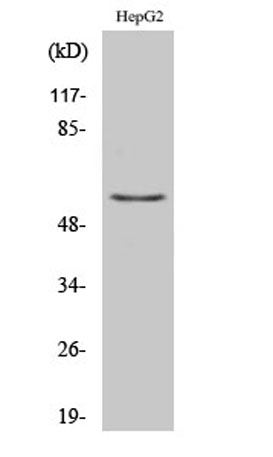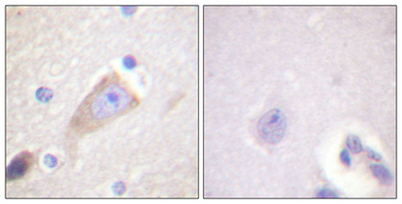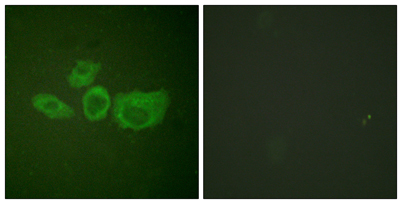Tyrosine Hydroxylase Rabbit Polyclonal Antibody
| Cat Number: | ABE3600 |
|---|---|
| Conjugate: | unconjugated |
| Size: | 100 ug |
| Clone: | Polyclonal |
| Concentration: | 1 mg/ml |
| Host: | Rabbit |
| Isotype: | IgG |
| Immunogen: | The antiserum was produced against synthesized peptide derived from human Tyrosine Hydroxylase. AA range:41-90 |
| Reactivity: | Human;Mouse;Rat |
| Applications: | Western Blot: 1/500 - 1/2000. Immunohistochemistry: 1/100 - 1/300. Immunofluorescence: 1/200 - 1/1000. ELISA: 1/20000. Not yet tested in other applications. |
| Molecular: | 55kD |
| Purification: | The antibody was affinity-purified fromrabbit antiserum by affinity-chromatography using epitope-specific immunogen. |
| Synonyms: | TH; TYH; Tyrosine 3-monooxygenase; Tyrosine 3-hydroxylase; TH |
| Background: | The protein encoded by this gene is involved in the conversion of tyrosine to dopamine. It is the rate-limiting enzyme in the synthesis of catecholamines, hence plays a key role in the physiology of adrenergic neurons. Mutations in this gene have been associated with autosomal recessive Segawa syndrome. Alternatively spliced transcript variants encoding different isoforms have been noted for this gene. [provided by RefSeq, Jul 2008], |
| Form: | liquid |
| Buffer: | Liquid in PBS containing 50% glycerol, 0.5%BSAand0.02% sodium azide |
| Storage: | -20°C/1 year |

Western Blot analysis of various cells using TH Polyclonal Antibody

Immunohistochemical analysis of paraffin-embedded Human brain. Antibody was diluted at 1:100(4° overnight). High-pressure and temperature Tris-EDTA,pH8.0 was used for antigen retrieval. Negetive contrl (right) obtaned from antibody was pre-absorbed by i

Immunofluorescence analysis of HUVEC cells, using Tyrosine Hydroxylase Antibody. The picture on the right is blocked with the synthesized peptide.
